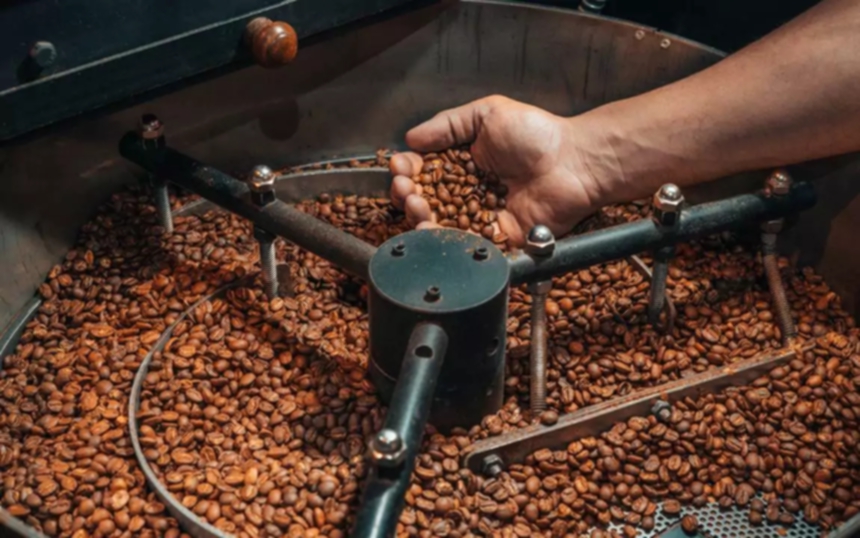What Chemical Changes Have Occurred During Coffee Roasting?

Do you know what happens when you bake coffee beans? What kind of chemical change makes coffee green beans turn into captivating and aromatic coffee cooked beans?
In another article, we looked at the structure of coffee beans playing an important role in making the baking process happen smoothly and physically. Let's look at the chemical changes that occur during baking, and how flavors and aromas develop.
Bagged Green Beans From The Roasting Bean Factory
Major Chemical Reactions
Heating coffee beans can trigger hundreds of different chemical reactions, baking can degrade some compounds, alter others, and produce new compounds.
Every time you drink coffee, do you know where the origin of the coffee is in your hand?
You may hear people say that pyrolysis, when organic matter is heated above its decomposition temperature, produces volatile compounds and leaves solid residues containing a lot of carbonation or coke. While we avoid overheating coffee beans to cause carbonization during coffee roasting, they do undergo chemical changes associated with pyrolysis, including caramelization and the production of volatile compounds.
The following are the main chemical changes associated with baking:
Maillard Reaction
This reaction will occur at about 150 °C when the coffee beans are still endothermic and continue to heat during the roasting process. Heat causes reactions between carbohydrates and amino acids in beans, resulting in changes in color, taste, and nutrients.
As a coffee lover, you can discuss and share anything about coffee online with other coffee lovers.
The color change is mainly due to melanoid production, a large amount of substances that not only turn coffee beans brown but also affect the taste and alcohol thickness of coffee.
The temperature and time of the maillard reaction may have a significant effect on the final flavor with a slight change.
Coffee that spends longer in the maillard reaction increases its viscosity, while the shorter maillard reaction produces more sweetness and acidity because if the maillard reaction takes too long, both the fruit acid and the acid that converts to sweetness will be destroyed.
When a bean roaster experiments with the baking technique, it also includes changing the length and intensity of Menard's reaction and documenting what effect these changes will have on the final flavor.
As a coffee fan, you probably drink coffee every day. But, do you know what coffee is exactly?
Green Coffee Beans
Degradation Reaction
This procedure depends on Mena's reaction, in which amino acids react with molecules grouped with carbonyl groups to produce compounds such as aldehydes and ketones. Beemakers do not necessarily need to know exactly what these compounds are. It is important to recognize that such reactions are indispensable for aromatic and flavorful compounds.
Caramelization Of Carbohydrates
When heated to about 170 °C, the heat causes a large amount of complex carbohydrates to decompose into smaller sugar molecules that can dissolve in water, representing an increase in the sweetness of the last flushed coffee. This reaction continues until the end of the roasting process, and it also contributes to the sweet aromas of coffee, such as caramel and almond.
What brewer do you usually use to brew your daily cups? Moka pot, espresso maker, or French press? Do you know how to properly use a French press?
Why Is Some Coffee Sweeter?
Volatile Versus Non-Volatile Compounds
You may have heard people say that baking produces volatile and non-volatile compounds, usually aromatic and non-volatile compounds. But what exactly are these substances?
Volatile compounds are organic chemicals with a high vapor pressure at room temperature, many of which are formed in degradation reactions or in the development phase of baking. When a volatile compound dissipates, we smell the unique aroma of the coffee, including:
As a coffee lover, how much do you know about baristas?
Running Coffee Roaster
Non-volatile compounds are usually stable substances at room temperature, that is, they do not evaporate. The compounds in these parts change during the baking process, while the remaining compounds remain stable throughout the baking process, and non-volatile compounds contribute to flavor production.
Caffeine, for example, may bring some bitterness. Caffeine occurs naturally in coffee and remains unchanged during roasting. Other non-volatile compounds, including sucrose that provides sweetness, oils that provide alcohol thickness and taste, and protein melanins that produce color and alcohol thickness, are non-volatile compounds.
More Resources: Create online resumes and portfolios - lindseywilsoncollege
Action Of Acids
Acid has a great effect on flavor production, and baking can degrade some acids and produce others.
For example, citric and tartaric acid, which produces a fruity and sweet taste, decomposes during baking. So long or overheated roasts can drastically reduce the sweetness of the final coffee.
Coffee contains a large amount of chlorogenic acid, which can be roasted to decompose into caffeic acid and quinine acid. Both chlorogenic acid and quinine are thought to form bitter and astringent tastes.
What temperature do you like to drink coffee? Cooler or warmer? Should coffee be served hot?
Freshly Roasted Coffee Beans
Coffee roasting includes many chemical changes that help develop flavors, aromas, and mellow thickness in coffee cups. Many reactions are sensitive to temperature changes and the length of heating. Therefore, small changes in baking technology can have a profound impact on flavor characteristics.
Understanding what happens during the baking process and why these changes occur can help you make more informed choices. If you have a concept of how these compounds are produced during the baking process, you can better understand what's wrong with your baking batch or use the information correctly to make the next pot more successful.
If you want to brew more delicious coffee, you can get more resources on coffee websites through Beacons.
